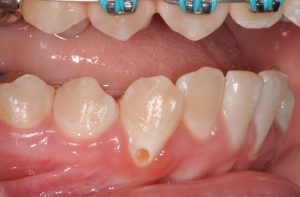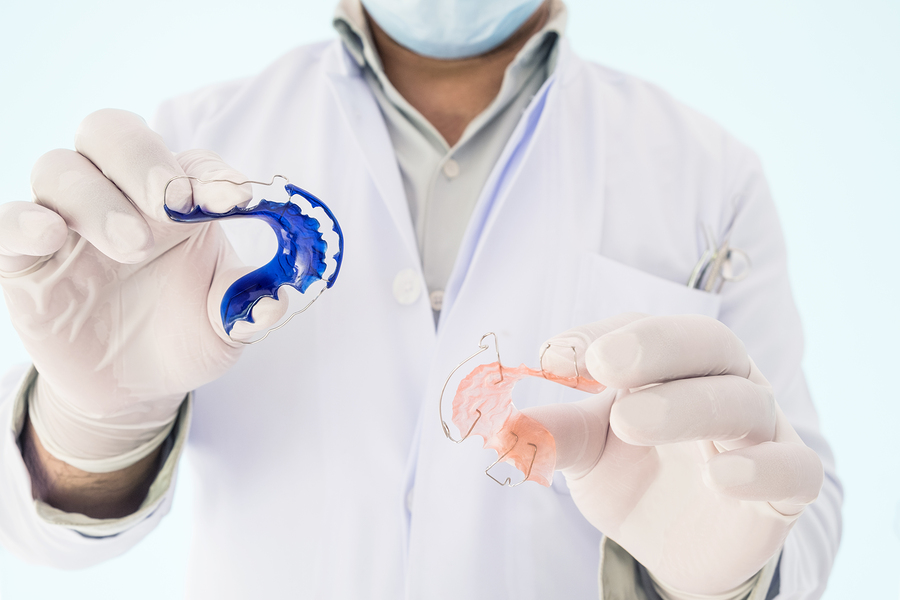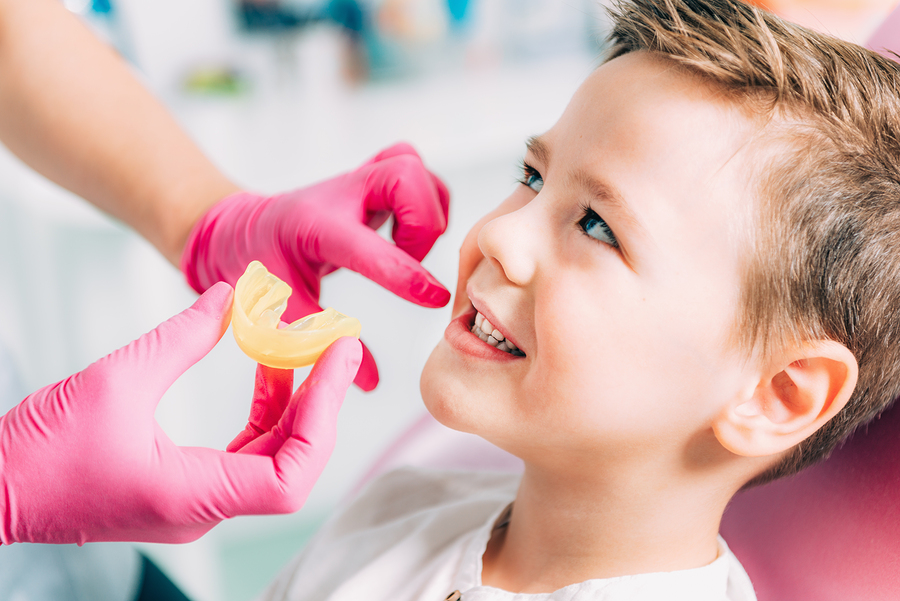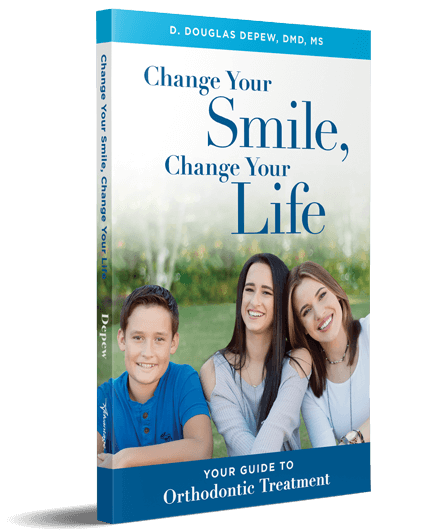Category: Uncategorized

The Dangers of Soda and Soft Drinks
Who doesn’t love a glass Coke or other soft drink on ice to wet our whistles. during the summer? Nothing tastes or feels better, right. So I wanted to stress something we are seeing more and more in our patients. Soft drinks and sports drinks DO cause damage to teeth, especially decalcification and decay. To be clear, it is both the sugar and the acid in these drinks that cause these problems. The worst culprits are cola drinks (Coke, Pepsi, Dr. Pepper) and sports drinks (Gatorade). Other soft drinks, including diet drinks, are not too far behind. This can happen even if you have good oral hygiene habits and keep off the plaque! It obviously happens more readily around your braces.

But as this photo shows, it happens even without braces on the teeth. It starts off as a cloudy, white look to the enamel, usually along the gumline. Then it progresses to a more obvious white. Eventually the surface of the enamel breaks down and an actual cavity occurs. To prevent this, whether you have braces or not, we recommend the following:
- Minimize soft drinks to only one or two a day
- Brush your teeth, or at least rinse with water, after that refreshing drink
- Drink through a straw
- Continue to use daily fluoride, especially if you are in braces
- Drink only water while you are wearing aligners or retainers
And definitely avoid the common habit of holding soft drinks in your mouth and swishing it around, as it causes damage too. After all that, I want to say…have a great summer!

Maintaining Your Results
Successful orthodontic treatment leaves you with a beaming smile and aligned bite, but that doesn’t mean it will always stay that way. You must actively work on maintaining your results to keep your smile straight and healthy for a lifetime.
Why Do Teeth Move Back? The art of orthodontics is only possible because teeth can be moved. This also means that once your treatment has been completed, your teeth can shift back into their original position, which happens for a number of reasons.
The tissue around the teeth can shift them back into their former position after the pressure from braces or aligners has been released. Also the tongue and cheeks can have an effect on your smile depending on how much force they are placing on the teeth.
The Role of Removable Retainers. After you get your braces off, you should expect to wear some sort of retainer. For the first few weeks, your orthodontist will likely ask that you wear your retainer both day and night, only taking it out to eat, drink, and clean your teeth/retainer.
After this initial stabilization period, you’ll still need to wear your retainer consistently but probably only while sleeping. I have many patients ask me how long they’ll need to sleep wearing their retainer, and my response is always “for as long as you want to have straight teeth.” If you stop wearing your retainer, there’s always the chance that your teeth will shift.
Permanent Retainers. Sometimes a permanent retainer is needed to keep teeth in position. These are affixed to the backs of teeth with small brackets and wires. They’re often used on the four lower front teeth. While you don’t have to worry about taking these in and out, like braces, they require a little extra maintenance.
Permanent retainers can break or be popped off with overly crunchy, sticky, or chewy foods. I suggest that patients follow the same food restriction guidelines as braces to avoid issues with their permanent retainer. Also, flossing between these teeth requires a little extra time and care. You will need to use a floss threader or a waterpik to clean debris from teeth.
If your permanent retainer breaks or comes off completely, it’s very important to see your orthodontist as soon as possible. Your teeth can start shifting as soon as it breaks, and within a matter of weeks multiple teeth could move out of alignment.
Keeping Your Smile Healthy. Lastly, I want to address oral hygiene. It would be a shame to invest in a straight smile just to neglect your oral health. It’s important to brush your teeth for two minutes twice a day and floss at least once a day to keep bacteria at bay. Unchecked bacteria leads to cavities, tooth decay, periodontal disease, and even tooth loss.
But there’s no need to worry. As long as you wear your retainer and take good care of your teeth, your smile should stay bright and beaming for life!

Orthodontia: An Ever-Changing Field
I’ve been a practicing orthodontist for three decades and have helped more than 15,000 patients achieve beautiful smiles. Over the course of my career, the field of orthodontia has changed dramatically. New technologies are constantly making it faster and easier to create smiles that are both aesthetic and healthy.
The field of modern orthodontia has been innovating since the very beginning. Let’s look at a few of the technologies that have emerged in the last century.
While primitive orthodontic technologies have been found dating back thousands of years, our modern orthodontic techniques were being developed and fine-tuned in the early 1900s. Edward H. Angle is widely considered the “father of modern orthodontics,” and his research, leadership, and techniques separated orthodontia from dentistry.
Angle defined malocclusion, or the misalignment of the bite, and developed appliances for correction. In 1916, he introduced the first bracket system for moving teeth, a treatment method which continued to be developed and refined for the next few decades. Self-ligating braces, or braces that don’t require an elastic to attach the wire to the bracket, were introduced as early as 1935, though the technology we use today wasn’t patented until the 1990s.
In the 1970s, dental adhesives were developed, allowing brackets to be adhered directly to teeth rather than using wire to wrap each tooth. This, along with many other new materials and technologies, greatly increased the precision, comfort, and affordability of orthodontic treatment, and the field of orthodontia quickly expanded. Lingual braces, which are braces that are adhered to the backs of teeth, were also introduced during this decade.
While lingual braces achieved an “invisible” option, the industry continued to find new solutions for more discreet treatment methods. In the 1980s, ceramic (clear or tooth-colored) brackets were developed as an alternative to metal braces. One of today’s most popular choices for discreet orthodontic treatment, Invisalign, was invented in 1997 by Zia Chishti and Kelsey Wirth.
As you can see, we still use many of these technologies to treat patients today. There are so many different choices for orthodontic treatment because orthodontia is a field that is constantly improving and innovating. New technologies don’t replace older technologies completely; rather, they give patients the freedom to choose the method that’s best for their needs.
At my practice, Depew Orthodontics, we incorporate cutting-edge tech into patient treatment to give them the best possible results. Some of the advanced technologies we utilize include:
- 3-D imaging- Cone beam computed tomography (CBCT) allows us to see 3-D views of the teeth and roots, and the bones of the mouth.
- Intraoral scanners- These allow us to create digital impressions of teeth using a “magic wand.” That means no goop necessary to get impressions!
- 3-D printers- We use 3D printing to create models, retainers, and tooth aligners.
- Smile design software- This software helps us create precise treatment plans and shows patients how their teeth will move over the course of their treatment.
These combined with the orthodontic treatments that have been developed over the last century provide patients with the best results possible. Don’t settle for outdated orthodontics – find an orthodontist that harnesses the power of cutting edge technology to give you the smile you’ve always wanted.

The Power of a Smile
There are many reasons why I love the work I do as an orthodontist, but I think my favorite aspect of my profession is the ability to change people’s lives. Your smile affects more than just the way you look; it also affects your overall health. Having a beautiful smile is also important for making the most of the opportunities you have in life.
Straighter Smile, Better Health. When you think of orthodontics, you probably think of smile aesthetics, but a straight bite also improves your health. Many of the common issues that are addressed through orthodontic treatment can have a negative impact on your oral health. For example, teeth that are overcrowded are difficult to clean properly, which can lead to plaque buildup, gum disease, cavities, and tooth loss over time.
When creating a beautiful smile, we sometimes have to replace missing teeth. Without all of your teeth, you can’t chew your food with ease and your other teeth are at a higher risk of wear and tear. A misaligned bite can also cause excessive wear on your teeth, as well as jaw pain, headaches, or neck pain. So, a straighter smile isn’t just about looking your best﹘ it’s about feeling your best as well.
Better Smile, Brighter Future. Having a smile that you believe is beautiful boosts your confidence and can actually make you feel happier. The appearance of your smile also influences the way others perceive you, which can have a domino effect.
Your smile is one of the first things people notice about you and often one of the most remembered features of your face. Those who have straight smiles are often thought to be wealthier and more successful than those who have crooked teeth. And, job candidates with straight teeth are more likely to be hired than those without.
While this may seem unfair to those without straight teeth, it’s simply a matter of first impressions. It’s been shown the vast majority of people consider a person with straight teeth to look more trustworthy than those with a misaligned bite. In addition, having crooked teeth could affect your romantic relationships, too. A recent study shows that one-third of people say they wouldn’t go on a second date with a person who has crooked teeth.
Invest in Yourself. As you can see, an investment in your teeth is an investment in yourself. A healthy, beaming smile can give you opportunities that will change your life. It can improve your relationships, your career, your confidence, and your health. Are you ready to start your smile journey? Reach out to Depew Smiles today to see how we can serve you!

Shift Happens: Remember To Wear Your Tooth Pajamas!
Orthodontics can totally transform your smile, but what’s the use in investing if your teeth eventually move back to where they were before? The most important aspect of your treatment is maintaining a straight, healthy smile after your braces are off. Just as we were able to move your teeth in the first place, they can move back on their own. In this article I’m going to share with you what you can expect regarding smile retention after you’ve completed your orthodontic treatment.
Why Would My Teeth Move? Your teeth are surrounded by living tissue, and the fibers in these tissues are stretched to allow us to straighten your smile. Once your teeth are not being held in place by braces, these fibers might tighten up, moving your teeth with them.
In addition, the lips, cheeks, and tongue can have an effect on your smile. These are all forces that are in contact with your newly straightened teeth. They can cause your teeth to move outward or inward depending on where the force is coming from.
How Long Will I Wear my Retainer? Some patients are surprised to find out that they should expect to wear their retainer for a lifetime. Directly following orthodontic treatment, your teeth will remain slightly mobile for a few weeks. During this time, you can expect to wear your retainer both during the day and at night.
After anywhere from three weeks to three months, your doctor will tell you that you can just wear your retainer at night, and you’ll continue to do this for as long as you want to keep your teeth straight. This is why I call retainers “tooth pajamas.” Whenever you put your pajamas on, you put on your tooth pajamas, too!
What Different Types of Retainers are There? There are two types of retainers﹘ removable and fixed. Some doctors use mostly one or the other, but I look at each patient’s unique needs when deciding what type would be best for them.
A removable retainer is usually worn just at night (as we discussed) and can be taken out during the day and to be cleaned. This type of retainer is either made from acrylic and wire or clear plastic.
- Acrylic-and-wire retainers are made from a mold of a patient’s palate and have wires that hold it in place around the teeth. These types of retainers are very durable and can last for years if cared for properly, but they only fit on the top row of teeth.
- Clear plastic retainers are less visible than acrylic-and-wire retainers. They are molded to fit perfectly over all of the teeth, leaving the palette unobstructed. This type of retainer can work on both the upper and lower teeth. Plastic retainers are more easily lost or broken than their acrylic-and-wire counterparts.
Fixed retainers usually involve adhering a small wire to the back of the six front teeth. That means that when you smile, you can’t see it at all! Like braces, fixed retainers make some foods off limits.
Overly crunchy or sticky foods can break off the bonds. If a fixed retainer does happen to break, it’s important to see your orthodontist as soon as possible, as teeth can shift very quickly. Also, flossing with a fixed retainer requires a little extra care. Patients will have to use floss threaders (just like with braces) to clean between those teeth.
The longer you wear your retainer, the more likely it is that your teeth will stay where we moved them. It’s up to you to maintain your beautiful, straight smile!

Orthodontic Treatment for Special Circumstances
One of the things I love about being an orthodontist is that each patient brings with them a unique challenge. Many of my patients have come to me because they have special circumstances that require orthodontic correction. Today, I’m going to go over some of the more common issues I see, as well as methods for correcting them.
Overjet. This refers to when the upper teeth are too far forward and/or your lower jaw is too far back. This condition is more commonly called overbite. When correcting overjet the goal is to grow the lower jaw forward while moving the upper teeth backwards. This can be achieved by using a bite corrector or with elastics attached to braces.
Underbite. The opposite of overjet, an underbite happens when the lower jaw is too far forward. In some cases the top teeth are tipping backwards into the mouth as well. When correcting underbites, we want to slow down the lower jaw growth and make the upper jaw and teeth come forward.
It’s best to correct an underbite as early as possible, so that you can manipulate the jaw as it’s growing. Underbites can be corrected using an expander in the top of the mouth, braces and elastics, or in rare cases surgery. The earlier you begin correcting an underbite, the less likely it is that surgery will be required.
Crossbite. This condition can occur with just one tooth or many teeth, depending on the situation. Crossbite refers to when two corresponding teeth don’t line up. For example, if your top right back molar is positioned closer to the cheek than the bottom right back molar, that’s a crossbite.
If left to run its course, this condition can lead to crowding, impacted teeth, and unusual tooth wear. I’ve used expansion appliances, braces, springs, and elastics to correct crossbite. Since each case is so different, the techniques for each patient vary widely.
Impacted Teeth. Wisdom teeth are the most commonly impacted teeth, followed by upper canines. Any tooth that isn’t able to grow in on its own is considered impacted. Before helping a tooth grow in, it’s important to make ample space for it by expanding the palette and/or moving the adjacent teeth. Then, we might need to help the tooth grow in by attaching a chain and slowly pulling it into place over time.
Missing Teeth. When a patient is missing a tooth or multiple teeth, there are a few options. We can close the space where a tooth would’ve been or we can prepare the space open for an implant. Since implants can’t be placed until after the jaw stops growing, patients often need a temporary solution to hold the space open. I usually opt for a temporary fixed bridge, which can easily be removed to insert an implant later.
Misshapen Teeth. While you can usually control how teeth line up, you can’t always control their shape. Some teeth are just smaller than normal or oddly shaped. The best way to fix these is to open a small space beside the tooth, and then a dentist can use composite material or a veneer to make the tooth the right shape and size.
Extra Teeth. Whenever we find extra teeth, it’s best to extract them as early as possible. Otherwise, they can cause crowding, root damage, and other complicated issues down the line. I often work with an oral surgeon to extract any extra teeth I find in adolescent or teenage patients.
As you can see, orthodontics has the ability to solve just about any issue a smile can have. If you’d like to see what superior orthodontic care can do for your child, call Depew Orthodontics today to set up an appointment!

There’s No Age Limit On Gaining A Gorgeous Smile
You can have a beautiful and healthy smile at any age! It may come as a surprise, but your teeth age with your body and they can also shift. That is why it is essential to take care of your oral health and wear your retainer to maintain a gorgeous smile at any age. But, if you are one of the many that failed to wear a retainer continuously that is okay, your smile can still be saved.
When it comes to adults, our practice commonly addresses the three primary concerns they have when they walk into our door. These concerns are: What will the braces look like, how long will the treatment take, and how much will the treatment cost? When it comes to braces, sometimes the best treatment is the least ideal for an adult patient, but the good news is that we love the challenges that come with treating an adult patient! We have top-notch technologies and great aesthetic options that make adult orthodontics the best it’s ever been!
Adult orthodontic treatment can range from a relatively simple procedure such as moving just a few teeth, to dealing with more complicated cases that deal with wearing braces or other appliances. Some of the challenging issues that are more commonly seen in adults include the following:
- Worn, Cracked Teeth
- Missing Teeth
- Crowns, Bridges and Implants
- Jaw size discrepancies
- Periodontal Diseases
No matter what age you are, or what treatment your health requires, you are capable of having a vibrant and healthy smile. My practice makes it a priority to create a tailored experience for every patient and ensuring them the best treatment we can provide. Your smile contributes to your physical and mental health, and you deserve to have a smile you are proud of. There is absolutely no age limit on gaining a gorgeous smile.

You Have Options! Braces Now Come In Many Forms
Orthodontic technology has come very far over the years. Today, When patients come in for treatment, they usually come equipped with a few ideas in mind for what they want in terms of speed, aesthetics, and cost. The type of braces they choose can address all three of these concerns. With the many options in braces available today, we can customize the treatment to give patients what they need and want.
Braces are what allow the orthodontist and team to move teeth. Braces are a combination of several small components affixed to permanent teeth to move them as determined by a treatment plan. Combined, these components are known as a “fixed appliance,” which means that the braces are firmly attached to the teeth and cannot be removed by the patient. Today, we are given numerous options for braces such as standard metal braces, ceramic braces, lingual braces, self-ligating brackets, and clear aligners. What are the difference between these types of braces? When choosing the type of orthodontic treatment, we pick based on the needs and wants of our patients.
Standard Braces: Traditional braces made of metal usually used in Phase I cases. They tend to use simpler movements. Children and teens often prefer them as the colors of the bands can be customizable.
Ceramic Braces: These are the most common type of clear brackets that are requested when the patient wants their braces to blend in with their teeth. It is more common for teens and adults to choose these brackets over the metal ones because they would prefer that their braces are not as noticeable.
Lingual Braces: Braces that are glued to the back of your teeth so that they are entirely invisible. This type of braces has been around for several years and has been perfected in the last ten years. Lingual braces are often used by people that do not want it to be known that they are receiving orthodontic treatment.
Self-Ligating Brackets: This treatment is a type of fixed system of braces that doesn’t hold the wire in place with rubber bands or steel ligatures around the brackets. It is felt this can accelerate treatment so that moves the teeth faster and calls for shorter appointment times.
Clear Aligners: These plastic aligners are a technology that allows the patient’s teeth to be straightened without a fixed bracket-and-wire system. It is important to know that clear aligners are not braces, but an alternative to them.
With the advanced technology in this day and age, braces have been tailored to several needs and wants of patients. But regardless of the type of braces a patient chooses, they all require consistent good oral hygiene to keep your grin happy and healthy.

The Benefits of Orthognathic Treatment
Orthognathic treatment is a combination of orthodontics and jaw surgery. Orthognathic surgery is required more often with adults because we don’t have the option of moving the bone as it develops as we do with children. As an orthodontist, it is my job to line the teeth up straight, and then the surgeon will proceed to move the top and bottom jaws so the teeth match. Orthognathic treatment involves extensive planning, including measuring, evaluating x-rays, making models, and taking photographs. Once the plan is finalized, the treatment begins. From the data taken from the CBCT 3D scanner, we can actually do a virtual surgery to see how to move things and how everything will look after the procedure is done.
Though this treatment takes time, the benefits that you can gain from it are numerous. Orthognathic treatment will improve your bite, making it easier to chew and eat, correct swallowing and speech problems, relieve pain caused by TMJ, provide relief for deficient breathing and sleep conditions, and correct facial imbalances. In many cases there is an obvious change and improvement in facial appearance; in others it may not be as apparent. By aligning your jaw, you are not only caring for your oral health but giving yourself a better quality of life and protecting your overall health.
With all of that said, I like to let my patients know that when considering orthognathic treatment, it is essential to be aware that often the patient will look different to family and friends once the procedure is completed. For instance, if before surgery they had a protruding jaw, that will no longer be the case after surgery. Still, in the hundreds of orthognathic instances I’ve seen over the years, only one patient regretted doing it. Regrets are so few because even though the patient may look different, the results are always an improvement.

The Importance of Early-Childhood Oral Evaluations
When I tell parents that they should take their child to the orthodontist by the age of seven, I’m often met with shocked responses. “Seven! Why so young?” While a visit to the orthodontist by this age may seem premature, there are actually several good reasons for it.
Here’s why an early childhood oral evaluation is so important.
Why Age Seven?
The American Association of Orthodontists (AAO) recommends a visit to the orthodontist by this age because this is around the time that children have at least two upper front teeth, four lower front teeth, and four permanent molars growing in. This is enough to give orthodontists a very good idea of what your child’s future orthodontic health will look like.
Keep in mind that seven is the latest your child should be seen by an orthodontist; in some cases, it’s smart for younger children, even as young as four, to be evaluated by an orthodontist. One example of this is if you see that your child bites their jaw forward or to the side.
Why a Child Should See the Orthodontist
An evaluation in early childhood is valuable because if the child does have any issues with their teeth, bite, or jaw, these issues are easier to take care of at a younger age. That’s because the jaw is still growing and the teeth are still coming in, and everything is more malleable. Intervention at this age may be more effective, faster, less invasive, and less expensive than waiting to address the problem once the jaw and teeth are more set in adolescence.
Intervention at this age can help:
- Keep bites from getting worse
- Guide jaw growth
- Create needed space for adult teeth to grow in
- Maintain space from early loss of teeth
- Reverse adverse effects of habits such as thumb-sucking or tongue thrusting
The goal of the evaluation is not necessarily to begin treatment, but to create a roadmap for future treatment, if necessary.
Evaluation does not mean treatment
I think some parents are hesitant to take their child to the orthodontist at a young age because they think that means their child will be told to get braces.
This is not true. In fact, the majority of children do not need treatment at this age. They either have no issues or their issues are better addressed later on. Only about 15% of the young children I see go through what we call Phase I treatment.
However, if treatment is recommended, it may be something simple such as a space maintainer, or an appliance to help stop destructive habits such as thumb sucking. Or it may be active appliances such as an expander or braces to make room for the incisors and alter the jaw size. Occasionally, the orthodontist may recommend preventive removal of a couple baby teeth in order to make space in the mouth for permanent teeth.
Schedule your child’s visit to the orthodontist
If your child hasn’t been to the orthodontist yet, go ahead and schedule an evaluation. No referral is needed from your dentist for a screening (and dentists may not recognize the signs that would indicate a referral, anyway). As you now know, there are good reasons for going at such a young age. Either your child will be one of the majority who has no issues to address just yet, or they will be one of the few that do – and in that case, early intervention may be more effective, cheaper, and less painful than waiting a few more years. Either way, you – and your child – win.

